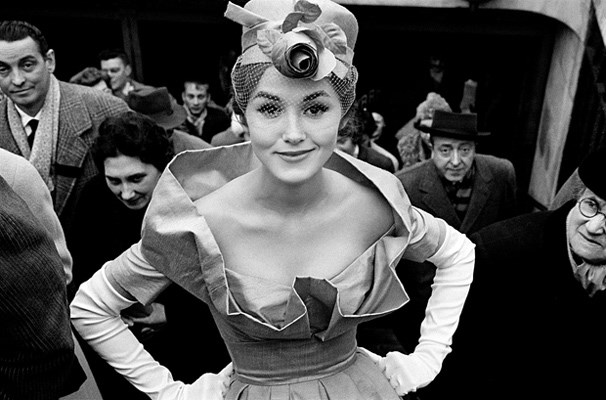Horvat: Fashion. Presentation House Gallery, Oct. 19-Dec. 23. Opening reception, Friday, Oct. 19 at 8 p.m. Conversation with Vince Aletti and Frank Horvat on Saturday, Oct. 20 at 2 p.m., Emily Carr University, Lecture Theatre RM 301.
The sailor seems lost, both in the nightclub and the moment, his chin pressed against his partner's cheek and just possibly a whisper on his lips. But the corners of her lips are turned sharply down, and her eyes are as far from the sailor as they can possibly be.
The photograph was taken by Frank Horvat, who combines the instincts of a photojournalist with a fashion photographer's sense of splendour.
Presentation House Gallery is hosting a collection of the Italian-born, Paris-based photographer's work beginning tonight with an opening gala.
A model and a writer seem to gush with silent pleasure as they share a conspiratorial moment, cigarettes ablaze.
A woman's sandal-clad foot towers on a beach like a monument to a fetish.
Christmas shoppers swarm down a Paris avenue, their faces as blunt and harsh as those of condemned criminals.
The images, mostly in black and white and mostly concerning fashion, are the finest work of a life spent waiting for the perfect moment to push the button, as chosen by Vince Aletti.
Aletti, a former Village Voice writer perhaps best known for chronicling disco as it exploded from New York's underground music scene, curated the exhibit.
Speaking from his home in New York, Aletti describes his appreciation of Horvat's work as well as his nearly lifelong affinity for photography.
"I grew up with a darkroom in the house and (my father) was fairly serious about making pictures as art," Aletti says.
His father died when he was quite young, but Aletti recalls the trappings of his father's passion around him throughout his youth.
"He left behind a whole run of U.S. camera annuals that I grew up with, looking at pictures," he says. "Since I was doing most of this as a pre-teen, when I was looking through those books I was looking for nudes . . . but I ended up seeing so much more than that."
Aletti says he quickly realized the versatility of photography as a medium.
"That was really an influential thing in my life to have a sense of photography as pictures in frames on the wall, and also as pictures that had history and consequence and beauty," he says.
While his musical tastes have moved from Motown to Drake and Frank Ocean over the years, Aletti is still immersed in the slick photography magazines that captivated him as a youth.
"I guess I've always been intrigued by it. As someone who collects these magazines, these vintage magazines, it was interesting to see (Horvat's) work in context with other people. I can't say that I focused on it in any particular way until I got involved with this project."
Curating Horvat's work for PHG gave the writer a chance to learn what made Horvat's work distinct among his often more famous colleagues.
"I found one issue (of French Vogue) where his pictures were sort of interspersed with Guy Bourdin and Helmut Newton, both of whom have very different styles than his, and both of whom treated women in a completely different way, a much colder and more controlling way. Frank's pictures seen alongside those look like love letters," he says.
One of Horvat's Calcutta photos, titled Beggars Assembly, seems meticulously staged. His first fashion photograph, taken in Florence, Italy, appears to have been interrupted by an inquisitive horse.
"In a lot of those pictures there's a face or a figure in the foreground that's slightly or almost completely out of focus, and you're looking past that person to his real subject, which is usually a woman in a dress," Aletti says.
Horvat's ability to incorporate the unexpected is a skill that was likely developed as a street photographer, according to Aletti.
"It's also something that I think comes from street work and from photojournalism, where you're dealing with people in motion and people who are not entirely in your control," he says. "So I think there's a really nice sense of spontaneity in the work, no matter how much that had to be planned."
While a more rigid photographer's composition would be compromised by an intrusion or an accident, Horvat's photos seem to be enhanced.
"What I think makes all these pictures work is that he has this great sense of balance. So that even when you're looking at something that is deliberately askew, the picture still feels complete and right."
The PHG exhibit is intended to detail Horvat's early work as an influence on his fashion shots.
"The fashion material in the show definitely outweighs the photojournalism, but we both felt that it was important to include both and to give a sense of essentially where the style came from," Aletti says.
Despite a career stretching back more than 60 years, the PHG show is complete, according to Aletti.
"There were things that Frank may miss, but I think I really got everything into the show that I really liked," Aletti says.



